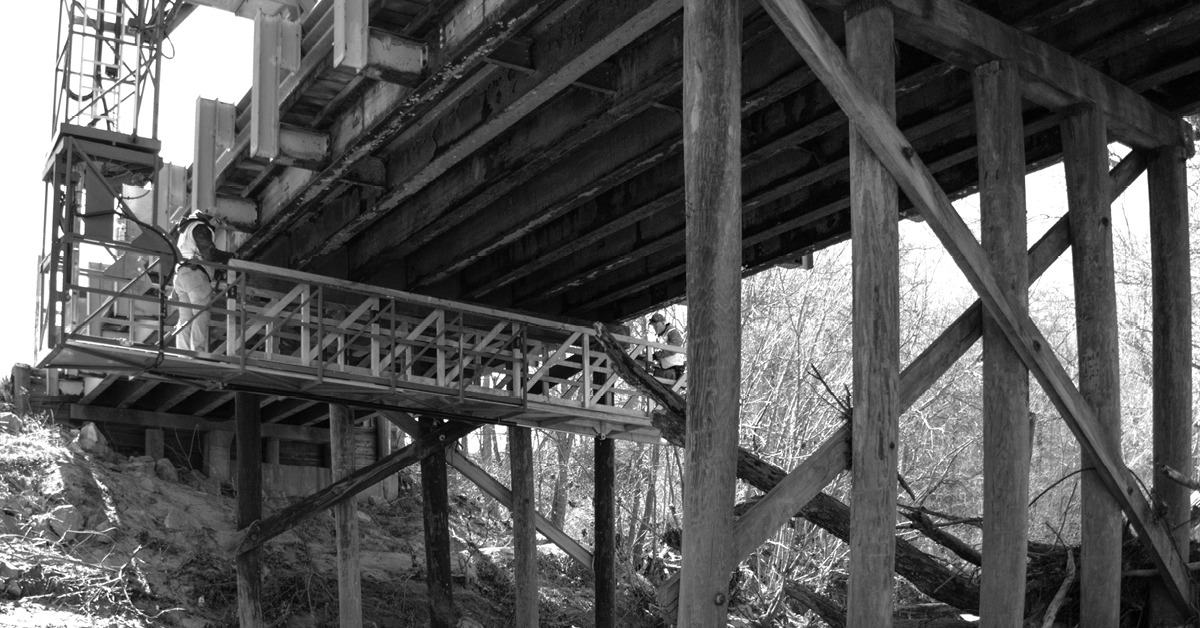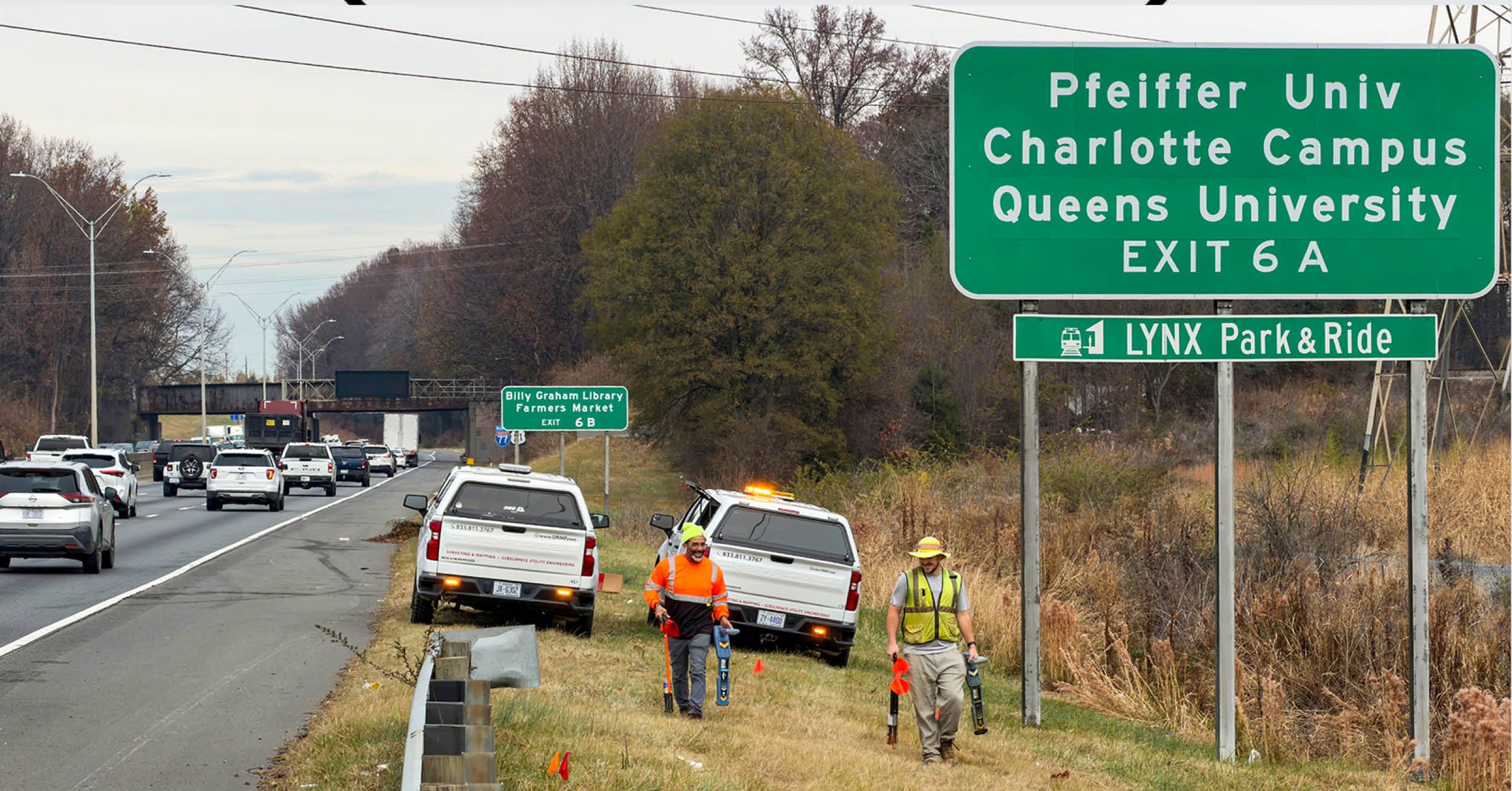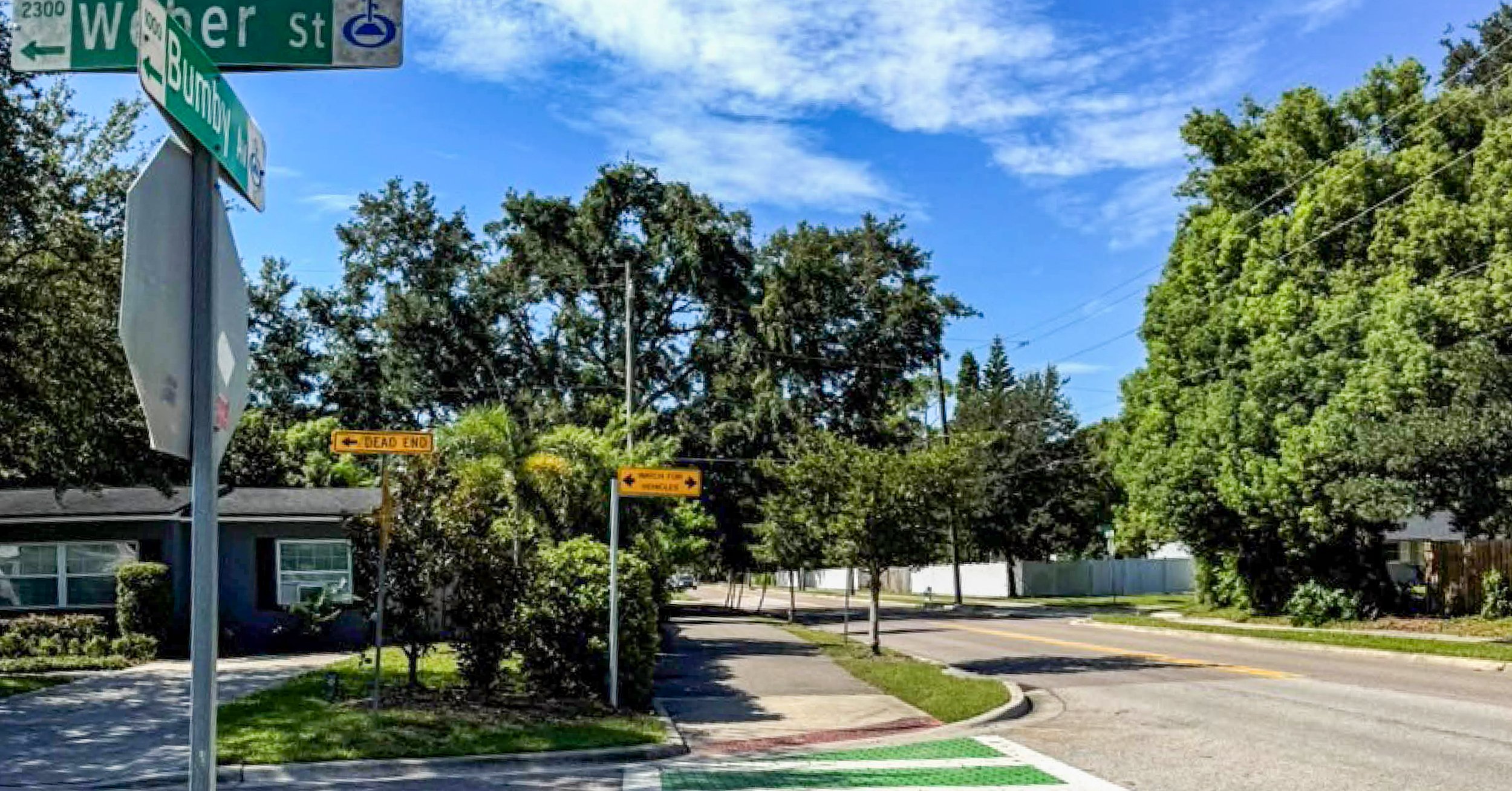Bridges are the silent heroes that connect our communities and enable the flow of goods and people across the country. Ensuring their safety and structural integrity is essential to keeping our transportation network running safely and smoothly.
The National Bridge Inspection Standards (NBIS) established inspection protocols and maintenance guidelines to maintain these vital structures. State Departments of Transportation (DOTs) are responsible for ensuring compliance with NBIS within their jurisdictions, and the Federal Highway Administration (FHWA) oversees the overall implementation and adherence to these standards nationwide.
By adhering to NBIS, the goal is to maintain bridge safety and reliability, prevent failures, and extend the service life of bridges nationwide.
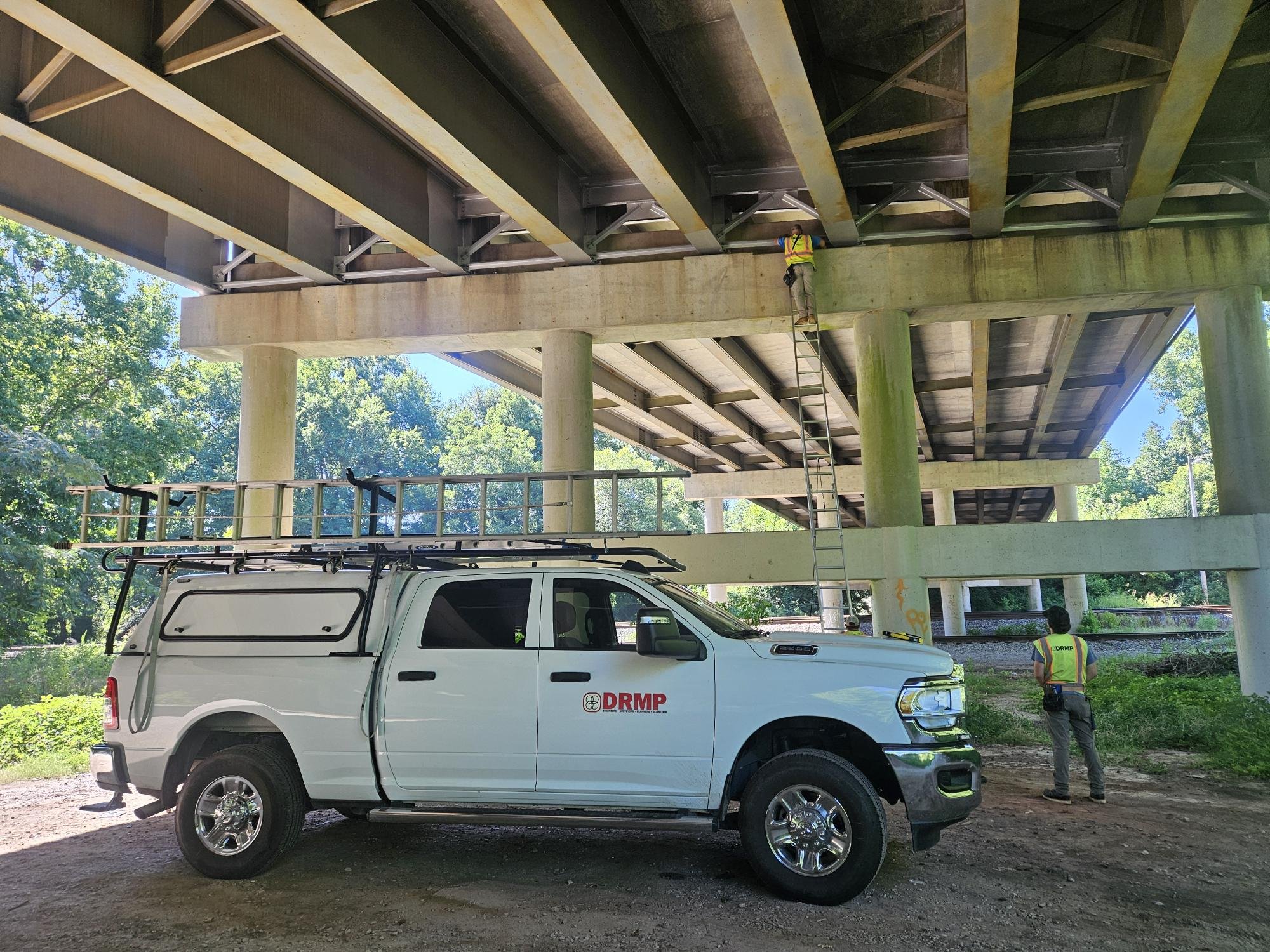
DRMP is honored to have been selected for the North Carolina Department of Transportation's (NCDOT) statewide structures contract. This two-year contract encompasses the in-service inspection of existing bridges throughout North Carolina.
As DRMP’s NBIS Leader, I am tasked with leading this project with my NBIS team leads Bryan Croom and Justin Massengale. I oversee all NBIS operations, while Massengale and Croom manage the crews, bringing over 45 years of combined inspection experience.
The number of bridges we inspect under the contract varies month to month. Each month, NCDOT assigns us several bridges to inspect, which can be located anywhere around the state. Our NBIS team is working closely with our structures team, which is conducting load-rating analyses to determine the maximum vehicle weight bridges throughout North Carolina can safely support.
Over the next six months, our goal is to build on this foundational contract and expand our services to include specialty bridge inspections and deck evaluations. Our vision extends beyond North Carolina and focuses on other DRMP markets to ensure broader regional safety and infrastructure reliability.
Inspection Methods
Our team employs a range of inspection methods, from visual and hands-on techniques to advanced nondestructive testing, such as ultrasonic and magnetic particle testing.
To determine the appropriate inspection method for a specific bridge, we consider its unique characteristics. Each month, we review inspection reports for about 20 bridges and decide on the suitable method for inspection. For instance, if a drone was used previously, we might opt for an under bridge bucket truck next, which can reach 62-75 feet to inspect the underside thoroughly.
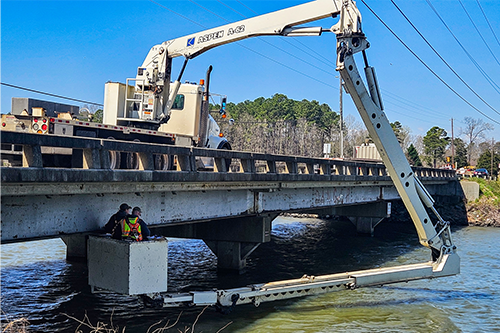
We frequently encounter section loss in steel beams, primarily due to weathering and road de-icing, which accelerates rusting. This process weakens beams, bearings, and expansion joints, making them crucial inspection points.
Bridge inspections are conducted biennially, and the frequency is adjusted based on the bridge's condition and specific requirements. This approach makes certain that even the most challenging environments and weather conditions do not compromise the thoroughness of our inspections. The safety of our inspection team is also a priority, especially when working under hazardous conditions, such as high traffic areas or challenging terrains.
Inspections are always conducted during the day to ensure optimal visibility. We avoid night inspections because even with lighting, shadows can obscure significant details. There are numerous types of bridges, including those over streams and rivers, highway grade separations, and some with or without interchanges. Each type requires a unique inspection approach that focuses on different aspects.
Weather events, such as 50-year storms or other natural disasters can necessitate conducting high water inspections and taking current stream bed profiles. For instance, if a bridge over a river experiences a catastrophic storm and lacks proper records, assessing its condition becomes challenging. Performing a stream bed profile can reveal erosion issues, indicating insufficient fill around the bridge that might compromise its integrity.
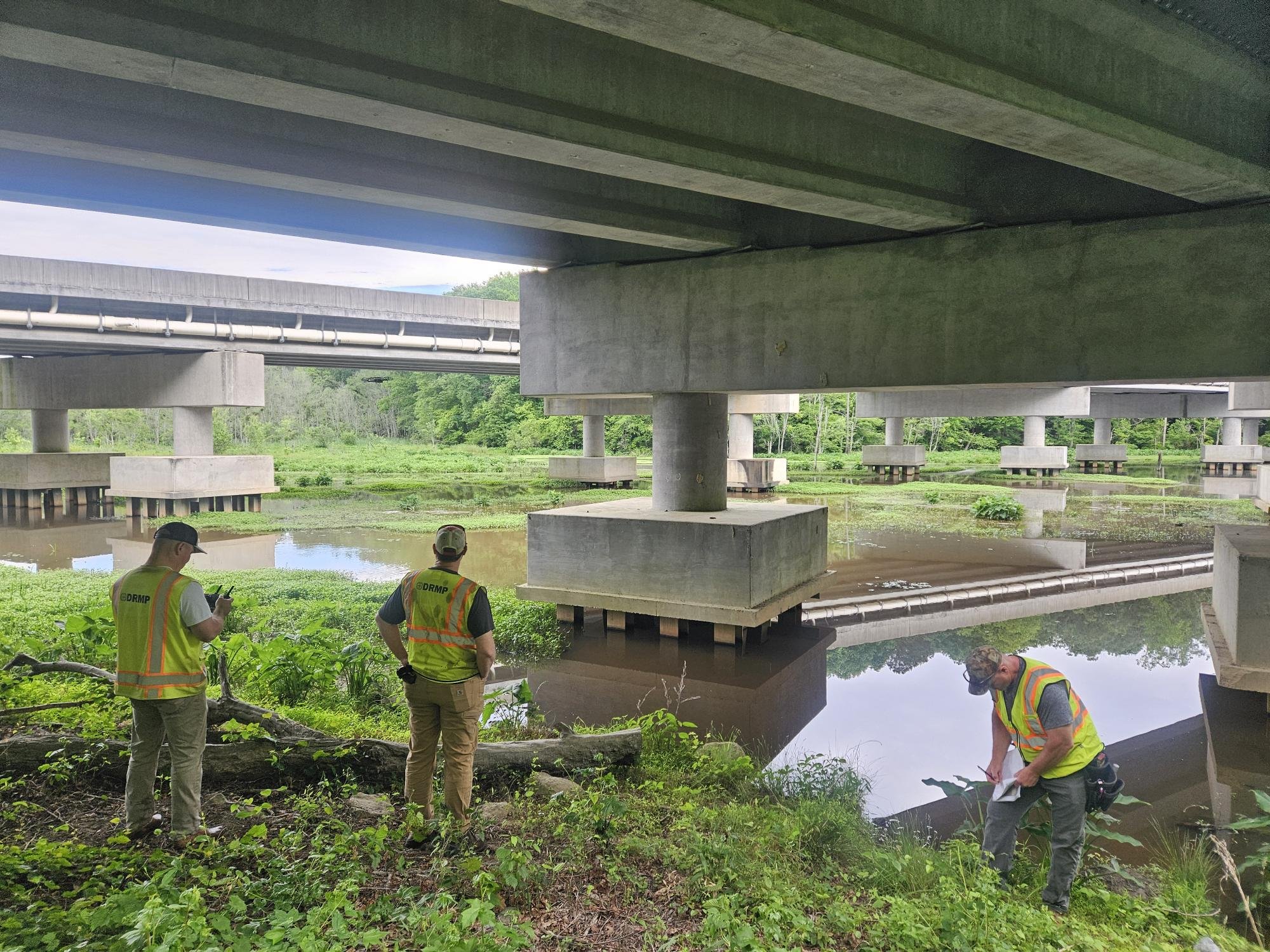
Every action taken during an inspection has a ripple effect. We assess height and width requirements and load ratings, among other factors. Over time, the fill around a bridge can either erode or accumulate, impacting its stability.
Our inspectors collaborate closely with hydraulic engineers to establish a baseline. If any part of the structure shifts by more than 3 feet, we notify the hydraulics department. They then compare the current state with original plans to determine if the bridge remains safe or if corrective measures, such as adding riprap, are necessary to reinforce it.
Making sure our inspection reports are accurate and thorough relies on our experience, education, and on-the-job training.
Consistency in our approach is key. We prioritize maintenance and repair of bridges according to their ratings. We rate bridges based on the condition of various components and categorize them into four levels: good (no immediate action required); fair (minor issues, such as initial rust or a small crack in the concrete that has just started); poor (more serious problems, such as advanced section loss or exposed rusty rebar that needs attention); and critical (severe issues that require a corrective action plan to be implemented within the next 90 days).
We provide detailed reports that include photographs and descriptions of the issues along with recommended timelines for repairs. State agencies are responsible for both inspecting and carrying out the necessary maintenance and repairs.
Inspection Challenges
Conducting inspections can oftentimes present challenges, particularly due to weather, the location of a bridge, the materials used in its construction, and the terrain it spans, such as deep gorges or elevated areas. Traffic also poses significant difficulties. Our inspectors can often find themselves maneuvering slopes, riprap, and large rocks, or working on flat interstates with favorable weather, but with vehicles whizzing by at 70 mph. Despite these conditions, we strive to do our best, as we are tasked with an important job—evaluating the elements that hold up the bridge.
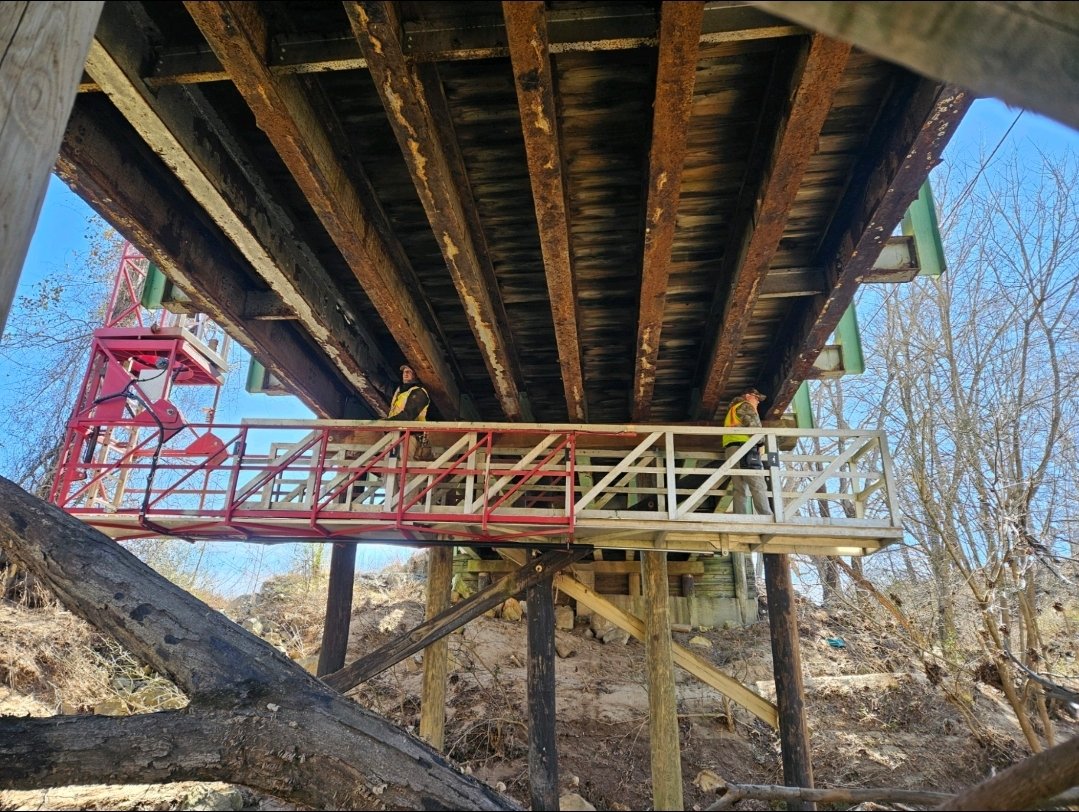
In North Carolina, many structures are classified as functionally obsolete, meaning they were built years ago with standards that are now outdated. These bridges often have narrow decks with wide rails, which were typical for their era. This can make the bridges appear deficient on current lists, even though they remain structurally strong. The condition of these bridges might seem worse than it actually is, primarily because they do not meet modern standards for width and vehicle accommodation. Consequently, the inventory of bridges may look more problematic than it truly is, even though many of these bridges are still robust and capable of handling today's demands.
Effective communication with engineers, maintenance crews, and stakeholders ensures that our findings are promptly acted upon. In urgent situations, our teams are prepared to coordinate immediate responses, including road closures, to prevent potential hazards.
Routine maintenance is imperative to extending the life of our bridges. By addressing issues early, we prevent minor defects from escalating into major problems, so that our bridges remain safe and functional for decades to come.
Our No. 1 goal is to maintain the highest NBIS standards of bridge safety and reliability and safeguard the infrastructure that connects our communities.


